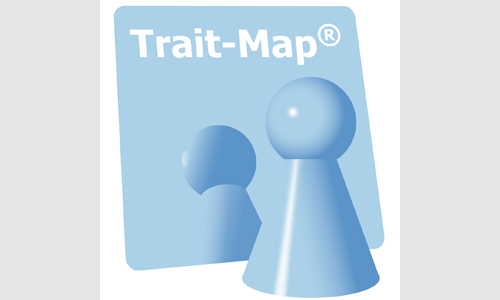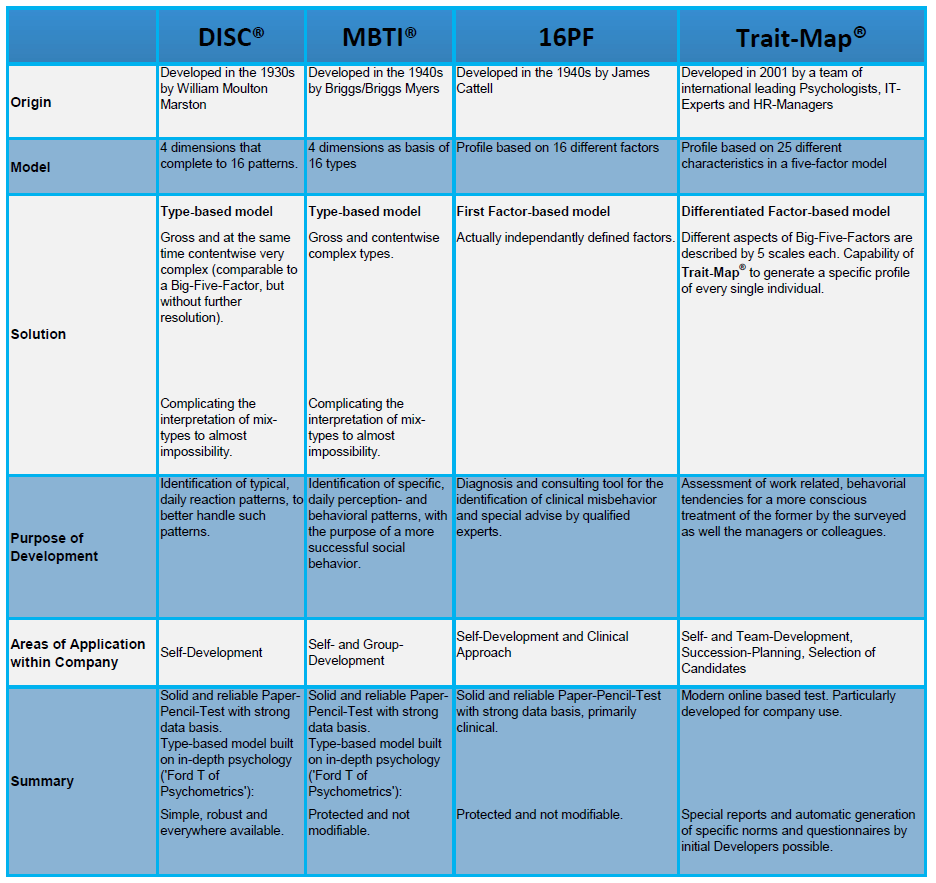Trait-Map® - the personality assessment for professionals

- Trait-Map® was introduced in 2002 by HRO as a personality inventory of latest generation.
- With Trait-Map® you receive a in-depth and transparent image of your employees and candidates.
- Trait-Map® is the successor of the 1990s international standard
"Big 5". - Trait-Map® follows the highest validity and reliability measures available on the market.
- The use of Trait-Map® will positively affect your work with a high performance and decreasing employment costs.
The benefits of Trait-Map®:
- Evaluation of means to obtain a higher individual performance
- Better self-awareness for a solid self-consciousness
- Performance optimization through a higher job-fit
- Distinct and constant perception training for an appropriate valuation of employees by decision makers
- Performance assurance via a porpuseful promotion of young professionals
- Performance optimization via a better team composition and more efficient team management
- SWOT analysis on a personal and employee oriented level
- Standardized tasks and results lead to reliable and comparable results
- Cost reduction via an efficient, constantly reviewed, automatized, worldwide and 24/7 available online-tool
- Available in multiple languages: English, Dutch, Chinese, Hungarian, German, Italian
Personality test vs. Inventory
Often, psychometric processes are being referred to as 'personality tests'.
This might lead to the impression that psychology has a clear and explicit idea of what a 'personality' is. More misleading is the fact that the understading of psychometric tests as 'personality tests' might imply that an individual result could be 'right', 'wrong', 'better' or 'worse'. Psychology nowadays describes 'personality' and its multiple perceptions and aspects in many different models and approaches.
In the underlying Trait-Map® model the following approaches are used: Big Five, our 25 ?, our leadership-, conflict- and team role models.
An inventory collects the information of the different models, constantly weighs them and calculates every single and possible combination. The same amount of information collected in an individual interview would suck up too much time and valuable resources. Additionally, the online-tool assures that responses are not influenced by the interviewer - the interviewee is totally objectively assessed. Graphic representation of the obtained information simplifies the understanding of such a complex construct.
As a result, one receives a highly differentiated and individual image - hold up the mirror to yourself.
Hence, the inventory is about data collection in order to gain a structured comparison of perceptions. This allows us to have a more efficient communication about issues, mostly of personal nature, that are hard to discuss in a professional environment. The Trait-Map® reports deliver a reliable, easily understandable and solid basis to work on. They do not replace personal talks, but they make the latter easier for both, emplyoee and manager.
To put in different words: Every individual possesses a huge inventory of caracteristics. Depending on role and situation only a part is used and an enormous potential remains untapped.

Of course we are happy to consult you individually to meet your expectations and personal needs. The vast possibilities allow all kinds of focuses, e.g. team optimization.
